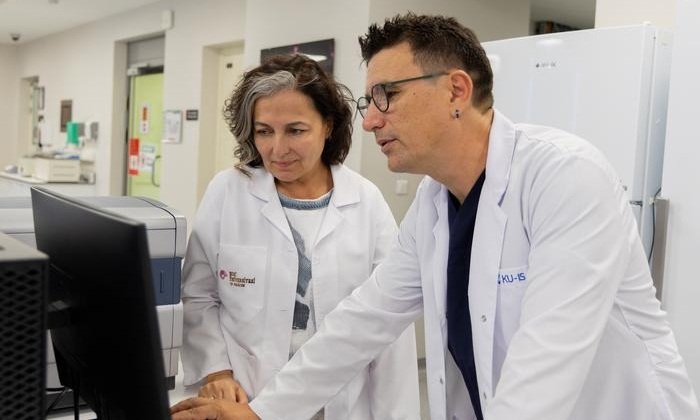Blood Test for Early Alzheimer's Detection Achieves Over 90% Accuracy
Posted on 14 Apr 2025
Alzheimer's disease (AD) is a debilitating condition and a leading cause of disability and death worldwide. The availability of reliable diagnostic tools is currently restricted, and diagnosis often relies on subjective assessments and expensive or invasive procedures, such as amyloid positron emission tomography (PET) scans and cerebrospinal fluid (CSF) tests. Consequently, many patients are not diagnosed until the disease has progressed significantly, reducing the efficacy of available treatments. Now, a breakthrough has made it possible to detect Alzheimer’s through a simple blood test.
A collaborative study, led by researchers from the Hospital del Mar Research Institute (IMIM, Barcelona, Spain), has successfully demonstrated the potential for determining the risk of Alzheimer’s in individuals showing signs of cognitive impairment by detecting a biomarker called phospho-tau217 in their blood. Published in Nature Medicine, this study validated the Lumipulse p-tau217, an automated and scalable blood test system developed by Fujirebio (Tokyo, Japan), which accurately identifies the threshold levels indicating whether a person is at risk of developing the disease or is free from that risk. The research team analyzed data from four hospital-based cohorts and one primary care cohort, involving a total of 1,767 individuals. Previous studies by this group had already confirmed that the biomarker could identify Alzheimer’s risk during its preclinical stages.

The study found that the automated blood test accurately predicted Alzheimer’s risk with over 90% accuracy in hospital patients, a result comparable to that of a lumbar puncture. The researchers took into account patient factors such as comorbidities (like diabetes and kidney function) and age. However, the accuracy was lower in primary care patients and those older than 80 years. The new diagnostic tool has the potential to significantly cut down the costs of diagnosing Alzheimer’s, with savings estimated between 60% and 81% compared to current diagnostic tests. This economic advantage, combined with its large-scale applicability, could greatly improve access to early diagnosis and the clinical management of Alzheimer’s disease. Nonetheless, the researchers emphasize that additional studies are necessary before the test can be fully integrated into clinical practice.
“This development may allow us to determine who needs to undergo further tests, such as a lumbar puncture or a PET scan, and who doesn’t, as it enables the detection of Alzheimer’s in its early stages with great accuracy,” said Dr. Marc Suárez-Calvet, a neurologist at Hospital del Mar and researcher at its research institute and the Barcelonaβeta Brain Research Center. “We have been able to establish two cut-off points that help us determine this risk. People whose p-tau217 biomarker levels fall between these two thresholds are the ones who need further testing.”












